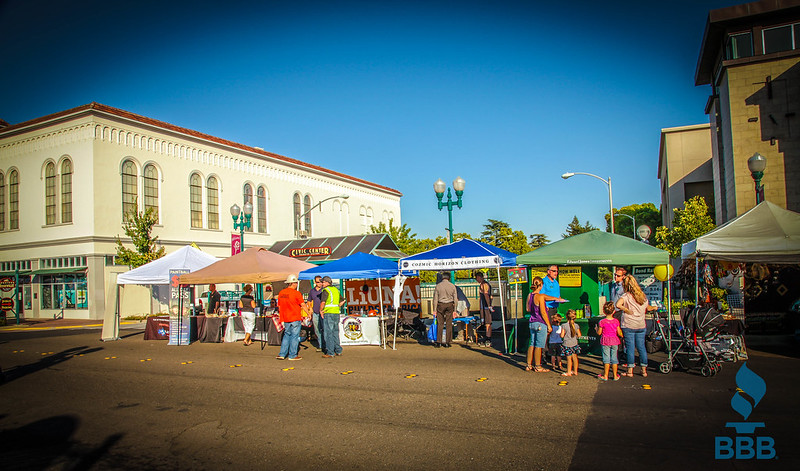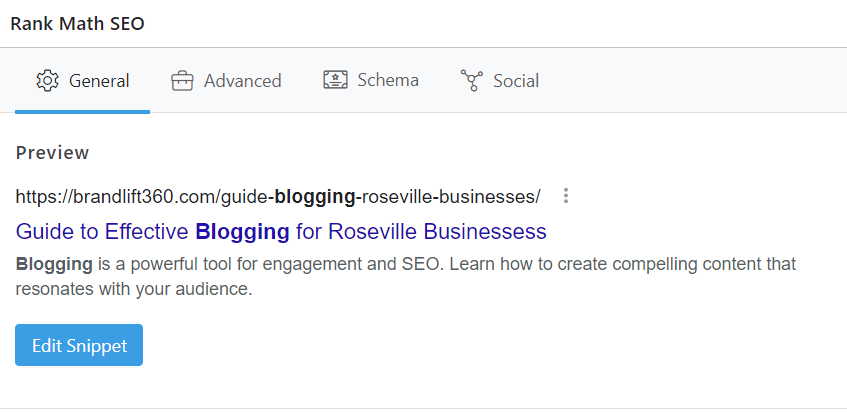If you’ve stumbled upon this piece, you’re probably curious about blogging and how it can benefit your local business. Well, you’re in the right place! We will kick things off by diving into the wonderful world of blogging and setting the stage for how it can be a game-changer for your venture.
First things first: what’s all the fuss about blogging anyway? Blogging isn’t just for foodies and travel enthusiasts; it’s an incredibly powerful tool for businesses of all shapes and sizes—yes, that includes your local businesses!
So, let’s get rolling. Imagine your blog as a digital storefront. Just like you would want your physical store to look appealing and inviting, your blog should be engaging and informative. It’s a space where you can showcase your expertise, share valuable information, and connect with your audience on a deeper level. Plus, it’s a fantastic way to drive traffic to your website and keep those customers coming back for more.
Blogging can help you:
- Establish Authority: Want to be known as the go-to expert in your field? Regularly publishing high-quality, informative blog posts can position you as a thought leader in your industry.
- Engage with Your Audience: A blog gives you a platform to share your story, answer common questions, and interact with your community. It’s like having an ongoing conversation with your customers.
- Boost SEO: Search engines love fresh content. Regular blogging helps improve your site’s search engine ranking, making it easier for potential customers to find you online.
- Generate Leads: By offering valuable content, you can attract potential customers who are interested in what you have to offer. Think of it as a magnet that pulls in people who are already searching for services that you offer.
Now, you might be wondering, “But I’m not a writer! How do I even start a blog?” Don’t worry, we’ve got you covered. In this series, we’ll walk you through everything you need to know, from setting up your blog to crafting compelling content and optimizing for search engines. We’ll even share some success stories to show you what’s possible.
So, grab a cup of coffee, sit back, and get ready to unlock the potential of blogging for your local businesses. Whether you’re a seasoned entrepreneur or just starting out, there’s something here for everyone. Let’s make your business shine online!
The Importance of Blogging for Local Businesses

You might be thinking, “Isn’t blogging just for travel diaries and foodies?” Well, not quite. Blogging can be a game-changer for businesses, even right here in Roseville. We’ve enumerated factors why you should consider adding a blog to your business strategy.
Builds Relationships with Your Audience
Blogging is all about connecting with your audience. By sharing valuable content, you build trust and establish a rapport with your readers. Think of it as having a friendly chat with your customers. When people feel like they know you, they’re more likely to do business with you.
Boosts Your SEO Game
Search engine optimization (SEO) might sound like tech jargon, but it’s crucial for getting your business noticed online. When you regularly post fresh and relevant content, search engines like Google take notice. A well-maintained blog can help your website rank higher, making it easier for potential customers to find you.
Showcases Your Expertise
Whatever your business is, blogging allows you to showcase your expertise. Share tips, how-tos, and insights that your audience will find useful. This not only positions you as an authority in your field but also keeps your customers coming back for more.
Drives Traffic to Your Website
Every time you publish a new blog post, you create another opportunity for people to find your website. Share your posts on social media, in newsletters, and through other channels to drive even more traffic. The more visitors you have, the greater the chance of converting those visitors into customers.
Cost-Effective Marketing
Let’s be real—marketing budgets can be tight, especially for small businesses. The good news? Blogging is a cost-effective way to market your business. With a bit of time and effort, you can create high-quality content that provides long-term value. Plus, it’s a great way to level the playing field with bigger competitors.
Encourages Customer Engagement
Blog posts can be a fantastic conversation starter. Encourage your readers to leave comments, ask questions, or share their thoughts. This engagement not only provides valuable feedback but also fosters a sense of community around your brand.
Supports Other Marketing Efforts
Your blog can be the backbone of your broader marketing strategy. Use it as a source of content for social media posts, email newsletters, and even press releases. Repurposing your blog content in different formats ensures you get the most mileage out of your efforts.
Gives Your Brand a Voice
Finally, blogging gives your brand a unique voice. Whether you’re witty, informative, or a mix of both, your blog is where you can truly express your brand’s personality. This helps set you apart from the competition and makes your business more memorable.
Blogging isn’t just a nice-to-have; it’s a must-have for any business looking to grow and thrive in today’s digital landscape.
Setting Up Your Blog: Key Steps for Success
So, you’re ready to take your business to the next level with a blog? Awesome decision! Let’s discuss the essential steps you’ll need to get your blog up and running smoothly. Trust me, it’s simpler than you might think, and we’ll make sure it’s a fun journey!
1. Choose the Right Platform
You need to decide on a blogging platform. WordPress is a popular choice due to its flexibility and user-friendly interface. Platforms like Wix and Squarespace are also great for beginners. The key is to pick one that suits your technical comfort level and business needs.
2. Get a Domain Name
Your domain name is essentially your blog’s address on the web. It should be easy to remember and relevant to your business. Think of it as your online business card. Sites like GoDaddy can help you secure a catchy and professional domain name.
3. Choose a Hosting Service
Next, you’ll need a reliable hosting service to ensure your blog is always accessible. Hosting companies like GoDaddy and Bluehost are known for their excellent customer service and uptime. Aim for a host that offers fast load times and strong security features.
4. Design Your Blog
Now, here’s where the fun really begins—designing your blog! Choose a theme that reflects your brand’s personality. Whether it’s sleek and professional or fun and quirky, the right design can make a big impression. Don’t worry if you’re not a design wizard; many platforms offer customizable templates that make it easy to create a stunning blog.
5. Essential Plugins and Tools
Plugins can add some serious firepower to your blog. For instance, Rank Math SEO helps with search engine optimization, while Akismet keeps spam comments at bay. Make sure to install a few key plugins to enhance functionality and improve user experience.
6. Create an Editorial Calendar
Consistency is crucial when it comes to blogging. An editorial calendar will help you plan your posts and stay organized. It’s a great way to ensure you’re consistently providing fresh content to your readers. Tools like Notion or Airtable can be invaluable here.
7. Write Your Pillar Articles
Pillar articles are comprehensive, in-depth posts that cover key topics related to your business. These articles serve as the foundation of your blog and provide valuable information that keeps readers coming back. Start by identifying the main themes and issues your audience cares about, then create detailed posts around these topics. Not only do pillar articles establish your expertise, but they also help with SEO by targeting specific keywords and providing valuable content that can be referenced in future posts. Notice, our first few blogs were all guides to the services we offer at Brand Lift 360. That is just one example of how you can plan out pillar articles for your blog.
8. Promote Your Blog
Once your first post is live, it’s time to spread the word! Share your blog in your newsletters, on social media, include a link in your email signatures, and maybe even consider some guest blogging opportunities. The more you promote, the more readers you’ll attract.
Crafting Engaging Content for Your Local Audience
If you’ve made it this far, you probably already know that blogging can be a game-changer for your business. But let’s get to the heart of the matter: crafting content that not only engages but also resonates with your local audience. Below are some key tips to make your blog posts the talk of the town.
Know Your Audience
First things first, you need to understand who you’re talking to. Are they young professionals, families, or retirees? The better you know your audience, the more you can tailor your content to their interests and needs. Consider creating audience personas. These are detailed descriptions of your ideal customers, including demographics, interests, and pain points. Once you have these personas, writing content that speaks directly to them becomes much easier!
Localize Your Content

Your readers are from your local area, so make sure your content reflects their locality. Mention popular local events, landmarks, or issues when relevant. This not only makes your content feel more personalized but also improves your local SEO. For example:
- Local Events: Write about upcoming community events like for us in Roseville, the Roseville Strawberry Festival or the Downtown Tuesday Nights.
- Local Issues: Discuss topics that matter locally, such as new business developments or changes in city regulations.
Quality Over Quantity
While it might be tempting to churn out post after post, quality always trumps quantity. A single, well-researched, and thoughtfully written article can have a greater impact than a dozen mediocre ones. Make sure your content is informative, engaging, and valuable to your readers. Use data from reputable sources, including expert opinions, and always proofread before hitting that ‘publish’ button.
Storytelling is Key
People love stories. Incorporate storytelling elements into your blog posts to make them more engaging. Share anecdotes related to your business, customer success stories, or even personal experiences that tie into your industry. This helps build a connection with your readers and makes your content more memorable.
Use Visuals
Words are powerful, but visuals can take your blog to the next level. Use high-quality images, infographics, and videos to complement your text. Not only do visuals make your content more engaging, but they also help break up long blocks of text, making your blog easier to read.
Encourage Interaction
Your blog shouldn’t be a one-way street. Encourage your readers to leave comments, share your posts, and engage with you on social media. Ask open-ended questions at the end of your posts to spark conversation. For instance:
“What are your favorite local spots in Roseville? Share your thoughts in the comments below!”
Keep It Fresh
Last but not least, keep your content fresh and up-to-date. Regularly update older posts with new information, and stay on top of industry trends. This not only keeps your readers coming back for more but also signals to search engines that your blog is active and relevant.
Follow these tips, and you’ll be well on your way to creating blog content that truly resonates with your local audience.
SEO Best Practices for Effective Blogging
Alright, so you’ve got your blog up and running, and you’re regularly posting engaging content. That’s fantastic! But here’s the kicker: if no one can find your posts, they might as well not exist. That’s where SEO—Search Engine Optimization—comes into play. Here are some tried-and-true SEO best practices that will help your blog shine bright in the vast sea of the internet.
1. Keyword Research is Key!
You need to know what your audience is searching for. Use tools like Google Keyword Planner, Ahrefs, or SEMrush to find out which keywords are relevant to your niche. Aim for a mix of short-tail and long-tail keywords to capture both broad and specific queries.
- Short-tail keywords: These are usually one or two words long and cover broad topics (e.g., “Roseville restaurants”).
- Long-tail keywords: These are longer, more specific phrases (e.g., “best Italian restaurants in Roseville”). These are easier to rank for and often capture more qualified traffic.
2. Optimize Your Titles and Meta Descriptions

Think of your title and meta description as your blog post’s first impression, this is what you see when you do a Google Search. Make sure your titles are catchy but also include your primary keyword. Meta descriptions should be engaging and informative, providing a brief overview of what the post is about while also incorporating relevant keywords. If you are using WordPress, you edit these at the bottom of your WordPress editor below your blog post.
Pro tip: Keep your titles under 60 characters and meta descriptions under 160 characters to ensure they display fully in search engine results.
3. Quality Content is King
Search engines love fresh, high-quality content. Make sure your posts are well-written, informative, and relevant to your audience. Include various forms of media like images, videos, and infographics to keep readers engaged and on your page longer.
4. Use Internal and External Links
Linking to other relevant pages on your site (internal links) and reputable external sites (external links) can boost your SEO. Internal links help search engines understand the structure of your site and keep readers engaged by guiding them to other valuable content. External links show that you’ve done your homework and are providing readers with well-rounded information.
5. Optimize for Mobile
More people are browsing the internet on their phones than ever before. Ensure your blog is mobile-friendly by using responsive design and fast-loading elements. Google prioritizes mobile-friendly sites in its rankings, so this step is crucial.
6. Leverage Social Media
Social signals like shares, likes, and comments can indirectly affect your SEO. Promote your blog posts on social media platforms to increase visibility and encourage engagement. The more people interact with your content, the more likely it is to get noticed by search engines.
7. Monitor and Adjust
SEO isn’t a one-and-done task. Use tools like Google Analytics and Google Search Console to monitor your performance. Pay attention to what works and what doesn’t, and be prepared to adjust your strategy as needed. SEO is an ongoing process, and staying flexible will keep you ahead of the curve.
By following these SEO best practices, you’ll increase the chances of your blog posts ranking higher in search engine results, attracting more readers, and ultimately driving more business. So, roll up your sleeves and get optimizing.
Case Study: How Brand Lift 360 Enhanced Client Visibility Through Blogging
Now we want to share some examples where blogging really helped businesses local to us, Roseville Businesses. Here is a case study that shows the power of blogging in action. Let’s take a closer look at how we’ve been doing some pretty amazing things with blogs and how we helped one of our clients skyrocket their online visibility.
The Strategy: Crafting a Customized Blogging Plan
Brand Lift 360 didn’t just jump into blogging willy-nilly. We took the time to understand our client’s brand, target audience, and unique selling points. Here’s a sneak peek into our well-thought-out strategy for the client we are discussing in this guide:
- Keyword Research: We identified key phrases that potential customers were searching for, ensuring blog topics were relevant and engaging.
- Content Calendar: Brand Lift 360 created a consistent posting schedule, keeping the business content fresh and frequent.
- Blog Topics: Blogs were crafted around tips, tutorials, behind-the-scenes stories, customer testimonials, and service offerings – all tailored to resonate with the business’ audience.
- Visual Appeal: High-quality images and personable writing made the posts visually appealing and enjoyable to read.
The Results: A Noteworthy Transformation
So, what happened next? Let’s break down the results that followed this strategic blogging approach:
- Increased Traffic: The client website traffic doubled within three months, with a notable bump in organic search visits.
- Enhanced Engagement: Readers started engaging more with the content, leaving comments and sharing posts on social media.
- Better SEO Rankings: The business began ranking on the first page of Google for several key search terms, driving even more organic traffic.
- Boost in Sales: With more eyes on the client’s services, a significant increase in online and in-store sales was recorded.
Lessons Learned: Tips for Your Blogging Success
This case study is a treasure trove of insights. Here are a few takeaways for your own business:
- Know Your Audience: Tailor your content to what your customers care about. This will keep them coming back for more.
- Consistency is Key: Regular posts keep your audience engaged and signal to search engines that your site is active.
- Quality Over Quantity: High-quality, well-researched posts are more valuable than frequent but superficial content.
- Engage with Your Readers: Encourage comments and shares. Engage with your audience to build a community around your brand.
With a smart strategy and consistent effort, blogging can truly transform your business.
The Future of Blogging for Local Businesses
As we wrap up our discussion on the significance and mechanics of blogging, it’s time to cast our gaze toward the future. The world of blogging is continually evolving, and staying ahead of the curve is crucial for maintaining a competitive edge. Be prepared for what lies ahead for blogging and how you can harness its potential to keep your business thriving.
The Rise of Visual and Interactive Content
 Gone are the days when a blog was just a wall of text. The future is all about engaging, multimedia content. Think videos, infographics, and interactive elements. Why? Because visual content is more digestible and shareable. A picture is worth a thousand words, and a video? Even more!
Gone are the days when a blog was just a wall of text. The future is all about engaging, multimedia content. Think videos, infographics, and interactive elements. Why? Because visual content is more digestible and shareable. A picture is worth a thousand words, and a video? Even more!
- Video Content: Integrate short clips or tutorials to showcase your products or services. Platforms like YouTube, TikTok, and Instagram are perfect for this.
- Infographics: Use visually appealing infographics to break down complex information or statistics. Tools like Canva make this easy.
- Interactive Elements: Polls, quizzes, and surveys can make your blog more engaging and provide valuable insights into what your audience cares about.
Embracing AI and Automation
Artificial Intelligence (AI) isn’t just a buzzword—it’s a valuable tool that can transform your blogging strategy. From content creation to personalization, AI can help you stay relevant and efficient.
- Content Generation: Tools like ChatGPT and Claude can help generate ideas and even draft initial content, saving you time and effort.
- Personalization: AI can analyze user behavior to tailor content, ensuring that your audience receives information that’s most relevant to them.
- SEO Optimization: Automated tools can continuously monitor and optimize your content to keep up with ever-changing search engine algorithms.
Focus on Community and Authenticity
In the digital age, authenticity is your secret weapon. Your audience craves genuine connections and values businesses that foster a sense of community. This means stepping away from overly polished, corporate content and embracing a more personal, down-to-earth approach.
- Storytelling: Share your journey, challenges, and successes. People relate to stories more than they do to sales pitches.
- User-Generated Content: Encourage your customers to share their experiences with your products or services. This not only builds community but also creates authentic content.
- Engagement: Be responsive. Reply to comments, participate in discussions, and show appreciation for your readers’ input.
Adapting to Changing Algorithms
Search engines and social media platforms are constantly updating their algorithms. What worked last year might not work today. Staying updated with these changes is essential for your blog’s visibility.
- Continuous Learning: Invest time in keeping up with the latest trends and updates.
- Experimentation: Don’t be afraid to try new formats and strategies. Monitor the results and adjust accordingly.
- Analytics: Use tools like Google Analytics to track your blog’s performance and understand what resonates with your audience.
Seek Professional Help if Needed
Blogging can be intricate, and it’s perfectly okay to seek professional assistance. Agencies such as Brand Lift 360 have the expertise to develop and implement strategies that can elevate your business. If you find yourself struggling or in need of additional support, don’t hesitate to contact professionals.
The future of blogging for your business is bright and full of opportunities. By embracing visual content, leveraging AI, prioritizing authenticity, and staying adaptable, you can ensure that your blog remains a powerful tool for growth and engagement. So, get out there and start creating! Your future readers are waiting.
Contact Brand Lift 360 for blogging services that are tailored to your Roseville business.
Blogging for Business FAQs
- Why is blogging important for local businesses? Blogging helps local businesses establish authority, engage with their audience, boost SEO, generate leads, and drive more traffic to their websites, making it a crucial part of a digital marketing strategy.
- How can blogging improve my business’s visibility online? Regularly posting high-quality blog content improves your website’s SEO, helping it rank higher in search engine results. This makes it easier for potential customers to find your business online.
- What type of content should I include in my business blog? Focus on content that showcases your expertise, answers common customer questions, provides value, and engages your audience. This can include tips, how-tos, industry insights, and local event coverage.
- Do I need to be a skilled writer to start a blog for my business? No, you don’t need to be a professional writer. Start with simple, informative content that reflects your brand’s voice. Over time, you can improve your writing skills or consider hiring professional help.
- How often should I post on my business blog? Consistency is key. Aim to post regularly, whether that’s weekly, bi-weekly, or monthly, to keep your content fresh and maintain engagement with your audience.












